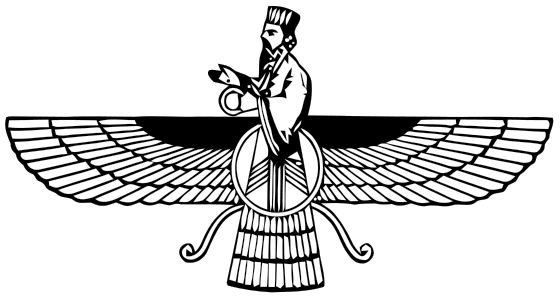The Teachings and Beliefs of Zoroastrianism: An Ancient Religion
What Is It?
Zoroastrianism was founded in Persia in the sixth century BCE by Zoroaster, who is also known as Zarathustra. Zoroaster was the prophet of a new kind of religion, one that preached faith in a single god instead of many. While most of the religions of the day worshiped several gods, Zoroastrianism was one of the first significant monotheistic religions in the world. Though no longer a major world religion, it still has followers in modern times and shares many of the ethical and, in some cases, the religious beliefs of Judaism, Christianity and Islam.
Beliefs and Practices
“I praise aloud the thought well thought, the word well spoken, and the deed well done.” – Zoroastrian prayer
Zoroaster taught that just as day is divided from night and darkness divided from light, good is divided from evil. The God of Zoroastrianism is called Ahura Mazda. The good forces in the world are led by Ahura Mazda’s servant, the holy spirit Spenta Mainyu. Spenta Mainyu also acts as a medium between humans and Ahura Mazda. Through Spenta Mainyu, humans can defeat the ultimate force of evil — the evil spirit Angra Mainyu. Humans, while capable of evil and temptation by Angra Mainyu, were not seen as inherently flawed. Zoroastrianism believes that Ahura Mazda gave humans free will to choose either good or evil. Through good words, thoughts and deeds, humans can serve Ahura Mazda and help defeat Angra Mainyu. Zoroaster also taught that good will ultimately triumph over evil.
Holy Books, Prophets and Followers
Little is known about the prophet Zoroaster himself. It is thought that he wrote the “Gathas,” a collection of songs in the form of dialogue between himself and Ahura Mazda. The Gathas are a part of the holy book of the Avesta (meaning “knowledge"). The Avesta’s other sections deal with worship practices, sacrifice and the native Persian worship of fire. Because the Zoroastrians incorporated Persian fire worship into their practices to adapt to the population they converted, a common misconception is that they were fire worshipers.
In fact, the conversion of Persia was a turbulent one — monotheism was controversial. Zoroaster himself was probably killed in religious wars. Eventually, the religion became well-established in the area, adopted by Persian kings and finally made Persia’s official religion. As for the Avesta, it continued to be added to as late as the fourth century CE.
Decline of Zoroastrianism
With the spread of Islam into Persia in the sixth century CE (an alternative term for the Anni Domini calendar), Zoroastrianism began its decline. While Muslims recognized Jews and Christians as fellow “People of the Book” who shared their religious heritage, Zoroastrians were not counted among them. Many followers of Zoroaster took refuge in India (home of Hinduism, a polytheistic faith). Today, there is still a following of about 120,000 Zoroastrians in India and another 20,000 in Iran, where their religion originated. The Indian Zoroastrians are called Parsis (meaning “Persian”) and do not accept their neighbors’ polytheism, but neither do they try to convert them.
Similarities to Other Religions
Zoroastrianism has often been noted for its similarity to the monotheistic religions of Judaism, Christianity and Islam. Like these three, it teaches belief in one god, a supreme force of good who is opposed by the ultimate force of evil. All these religions believe in a definite difference between good and evil — as opposed to several Eastern religions which generally believe that since all things are of God then good and evil are relative. There is also a spirit medium between God and humans: Spenta Mainyu in Zoroastrianism; the Holy Spirit and Jesus in Christianity; and the Angel Gabriel in Islam. Angels and demons also feature in all four of these religions.
The symbol of fire, an important Christian symbol of the Holy Spirit and everlasting life, is also important in Zoroastrianism for essentially the same reason: believed to be a perfect embodiment of Ahura Mazda, a flame is kept burning at all times in a temple. But then again, many religions stress the symbolic importance of fire — including Hinduism, a polytheistic faith. Finally, the belief that “one should not do to others anything that does not seem good to oneself” is also expressed in different words in the ethics of Judaism, Christianity and Islam.
However, there are also important differences. The three Abrahamic faiths believe that humans have free will to choose between good and evil, like Zoroastrianism. But while the Judeo-Christian tradition teaches that Satan was created by God and was good before he fell, Angra Mainyu is a deity of evil unto himself. Islam is also more strictly monotheistic than any of these religions, believing in angels only as messengers and rejecting the idea of intermediaries like Spenta Mainyu, Jesus or the Holy Spirit.
All in all, though, the similarities of these religions — especially their teachings of ethics and good deeds and their common origin in the Middle East — are more significant than their differences.
References
- Irani, Tiru. “Zoroastrianism,” The New Book of Knowledge, p. 396 vol. 20. Grolier Incorporated, 2001.
- Image: Faravahar by Kevin McCormick under CC by -SA 3.0
